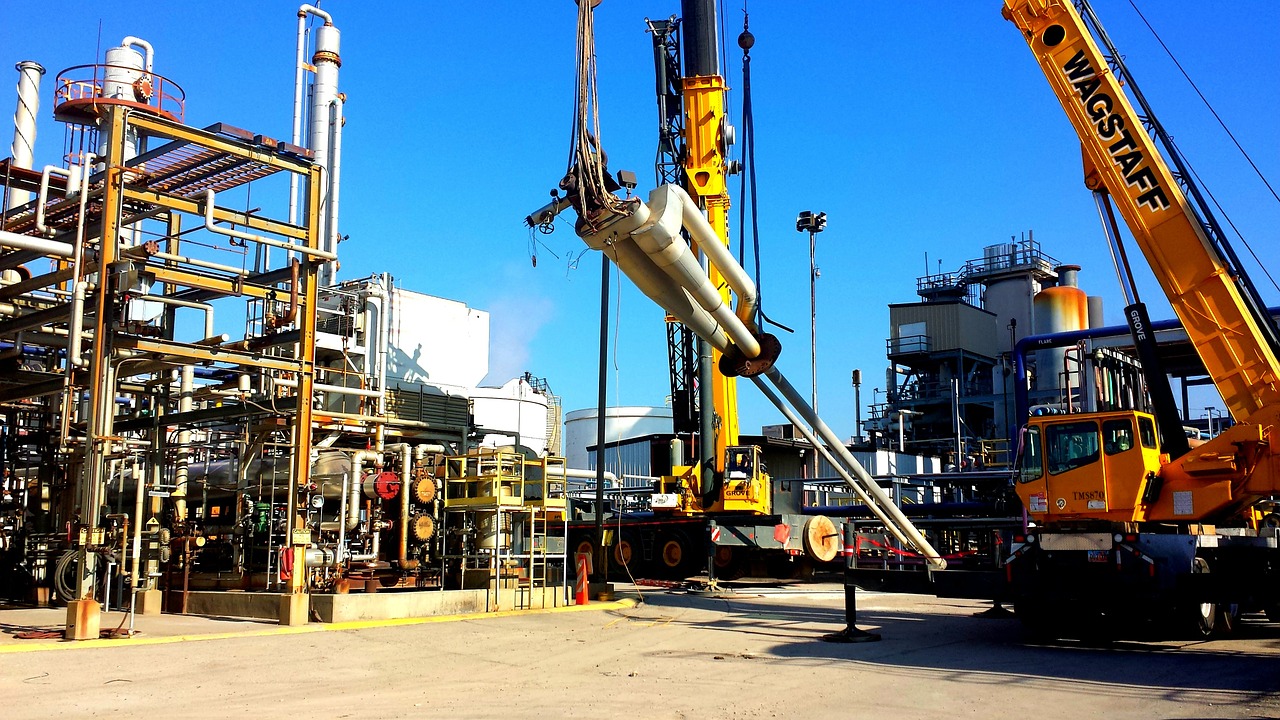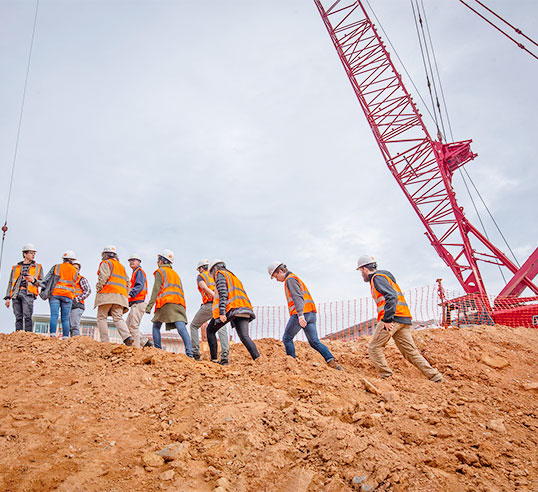Necessary High Qualities of Effective Civil Consulting Engineers
Necessary High Qualities of Effective Civil Consulting Engineers
Blog Article
Recognizing the Comprehensive Role of Geotechnical Designers in Ground Investigation and Dirt Analysis for Building And Construction Jobs
Geotechnical engineers are indispensable to the success of building jobs, offering necessary understandings with thorough ground investigations and soil analysis. Their expertise in analyzing dirt behavior and employing innovative screening strategies informs critical choices that support structural integrity and safety and security.
Role of Geotechnical Designers
The crucial role of geotechnical engineers in building tasks can not be overemphasized, as they supply important insights right into soil habits and website conditions. These professionals are entrusted with assessing the viability of the ground for different types of frameworks, ensuring safety and security throughout the building and construction procedure. Their proficiency incorporates a variety of tasks, consisting of website characterization, dirt sampling, and lab testing, which are essential for establishing the mechanical and physical residential properties of the dirt.
Geotechnical designers use their findings to establish fundamental layouts that fit load-bearing demands and alleviate dangers connected to soil liquefaction, negotiation, and slope security. They play an important function in identifying possible risks, such as groundwater changes and contamination, which can dramatically influence job practicality. They team up with engineers, civil designers, and contractors to guarantee that geotechnical considerations are integrated into the general style and building stages.
Ground Examination Methods
Ground investigation methods create the backbone of geotechnical engineering, allowing designers to obtain an extensive understanding of subsurface conditions. These methods are crucial for evaluating soil residential properties, establishing groundwater degrees, and identifying potential geological risks.
Usual methods consist of borehole drilling, which permits the removal of soil samples at numerous depths, giving crucial data for analysis. In addition, sitting testing methods, such as Typical Infiltration Examinations (SPT) and Cone Penetration Examinations (CPT), are used to review soil toughness and density directly in the ground.
Geophysical approaches also play a substantial duty in ground investigations. Strategies such as seismic surveys and electrical resistivity tomography aid analyze subsurface features without extensive excavation. geotechnical eng. These non-invasive approaches are particularly valuable in delicate or big areas where disruption have to be minimized
Additionally, exploratory trenches can be excavated to aesthetically examine soil layers and recognize any type of anomalies. Each of these strategies contributes one-of-a-kind insights, permitting geotechnical designers to develop exact site evaluations and inform style decisions. In recap, a mix of these ground examination techniques is essential for successful construction jobs, making sure safety and architectural honesty.
Soil Analysis Methods
Soil analysis techniques are crucial for understanding the chemical and physical properties of soil, which straight influence the design and construction of foundations and various other structures. Various techniques are employed to examine dirt attributes, making certain that geotechnical engineers get exact information for notified decision-making.
One generally made use of technique is grain size evaluation, which figures out the distribution of bit sizes within a dirt example. This is vital for classifying dirt types and forecasting their behavior under load. An additional essential strategy is Atterberg limitations testing, which examines the plasticity and dampness web content of fine-grained dirts, providing insights click for more right into their engineering homes.

Field examinations, such as Conventional Infiltration Examinations Get More Information (SPT) and Cone Penetration Tests (CPT), offer useful in-situ information pertaining to dirt strength and stratification. Jointly, these soil evaluation approaches develop the structure of geotechnical investigation, enabling engineers to make reliable and risk-free structures customized to the details conditions of the site.
Risk Reduction Strategies
Implementing effective threat reduction methods is crucial for geotechnical engineers to resolve possible difficulties in building and construction jobs. These techniques are essential in determining, assessing, and taking care of risks associated with dirt conditions, site stability, and groundwater fluctuations, which can detrimentally impact job outcomes.
One key method involves performing complete website investigations that use sophisticated geophysical methods and comprehensive dirt tasting. By acquiring accurate information on subsurface conditions, engineers can make informed choices on style and building and construction methods. Furthermore, employing predictive modeling devices enables for the simulation of different situations, allowing engineers to predict potential issues and execute safety nets.
Additionally, establishing clear interaction networks amongst task stakeholders promotes a collective approach to take the chance of administration. Regular updates and consultations make certain that all parties are aware of the developing website conditions and can adapt their methods as necessary.

Effect on Building And Construction Tasks
The effectiveness of threat reduction techniques directly affects the overall success of building and construction projects. Geotechnical engineers play a pivotal function in this domain, as their competence in ground examination and soil analysis informs essential decisions throughout the building process. By properly assessing dirt conditions and recognizing possible risks, these experts allow task groups to design effective services that lower dangers connected with ground instability, water infiltration, and various other geotechnical challenges.
The influence of comprehensive geotechnical analysis appears in various elements of building and construction jobs, including expense administration, job timelines, and structural stability. Early identification of problems permits timely interventions, minimizing expensive delays and budget overruns. A comprehensive understanding of website conditions enhances the style and engineering process, making sure that structures are developed to endure environmental stress and possible all-natural calamities.
Inevitably, the payments of geotechnical engineers are indispensable to the successful execution of building jobs. Their her latest blog job not just promotes safety and compliance with laws yet additionally enhances the lasting sustainability of structures, ensuring that they execute effectively throughout their desired life expectancy. The collaboration between various other stakeholders and geotechnical groups is vital for accomplishing ideal results in building and construction undertakings.
Conclusion
Finally, geotechnical engineers do an important feature in building and construction projects with thorough ground investigations and dirt analyses. Their experience in analyzing dirt habits, employing different investigation techniques, and applying risk mitigation strategies dramatically adds to the architectural stability and safety of constructed settings. By working together with multidisciplinary groups, these specialists enhance job performance and ensure conformity with safety and security standards, ultimately leading to effective building and construction outcomes and minimized potential threats.
Geotechnical engineers are essential to the success of building projects, supplying essential insights through detailed ground examinations and soil evaluation.The pivotal function of geotechnical designers in building and construction projects can not be overstated, as they provide vital understandings right into soil actions and website problems. Their proficiency incorporates a broad variety of tasks, including site characterization, dirt tasting, and laboratory testing, which are critical for figuring out the mechanical and physical homes of the dirt.
By accurately examining soil conditions and identifying potential dangers, these professionals enable project groups to devise effective services that minimize risks associated with ground instability, water infiltration, and other geotechnical challenges.
In verdict, geotechnical designers carry out a vital feature in construction tasks through thorough ground examinations and soil evaluations.
Report this page